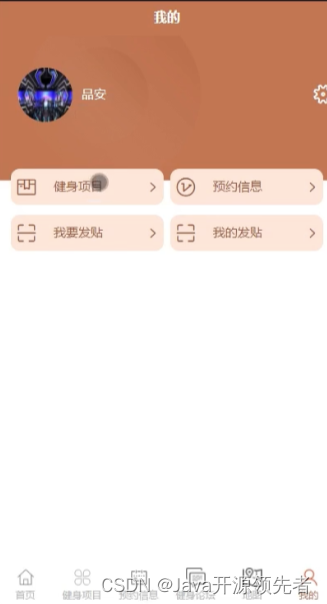文章目录
- 一、发布订阅模式原理
- 二、发布订阅模式实战
- 1、消费者代码
- 2、生产者代码
- 3、查看运行结果
本文参考:
尚硅谷RabbitMQ教程丨快速掌握MQ消息中间件rabbitmq
RabbitMQ 详解
Centos7环境安装Erlang、RabbitMQ详细过程(配图)
一、发布订阅模式原理

在开发过程中,有一些消息需要不同消费者进行不同的处理,如电商网站的同一条促销信息需要短信发送、邮件发送、站内信发送等。此时可以使用发布订阅模式(Publish/Subscribe),其工作原理如下:
- 生产者将消息发送给交换机,交换机将消息转发到绑定此交换机的 每个队列 中。
- 工作队列模式的交换机只能将消息发送给一个队列,发布订阅模式的交换机能将消息发送给多个队列。
- 发布订阅模式使用 fanout 交换机。
Fanout这种类型非常简单。它是将接收到的所有消息广播到它知道的所有队列中。在系统中可以查看到默认的一些exchange类型,其中就包括fanout类型交换机。
二、发布订阅模式实战
1、消费者代码
在发布订阅模式下,需要使用fanout类型的交换机,可以选择通过channel.exchangeDeclare()创建,指定类型为fanout,并且需要将交换机与队列进行绑定,形成绑定关系,这样生产者在发送消息到交换机以后,fanout交换机才会把该消息广播发送到各个具有绑定关系的队列。
消费者01代码如下:
/**
* Description: 发布订阅模式消费者01
*/
public class ReceiveLogs01 {
//设置要创建的交换机的名称
private static final String EXCHANGE_NAME = "logs";
public static void main(String[] args) throws Exception {
Channel channel = RabbitMqUtil.getChannel();
//创建fanout交换机
/**
* 参数1:交换机名
* 参数2:交换机类型
* 参数3:交换机是否持久化
*/
channel.exchangeDeclare(EXCHANGE_NAME, "fanout", false);
/**
* 生成一个临时的队列 队列的名称是随机的
* 当消费者断开和该队列的连接时,队列自动删除,防止无用队列占用空间
*/
String queueName = channel.queueDeclare().getQueue();
//将交换机与队列进行绑定(binding)
/**
* 参数1:队列名
* 参数2:交换机名
* 参数3:路由关键字,发布订阅模式写""空串即可
*/
channel.queueBind(queueName, EXCHANGE_NAME, "");
System.out.println("等待接收消息,把接收到的消息打印在屏幕上......");
//接收消息
channel.basicConsume(queueName, true, new DefaultConsumer(channel) {
@Override
public void handleDelivery(String consumerTag, Envelope envelope, AMQP.BasicProperties properties, byte[] body) throws IOException {
String message = new String(body, "UTF-8");
System.out.println("ReceiveLogs01控制台打印接收到的消息: " + message);
}
});
}
}
消费者02代码如下:
/**
* Description: 发布订阅模式消费者02
*/
public class ReceiveLogs02 {
//设置要创建的交换机的名称
private static final String EXCHANGE_NAME = "logs";
public static void main(String[] args) throws Exception {
Channel channel = RabbitMqUtil.getChannel();
channel.exchangeDeclare(EXCHANGE_NAME, "fanout", false);
String queueName = channel.queueDeclare().getQueue();
channel.queueBind(queueName, EXCHANGE_NAME, "");
System.out.println("等待接收消息,把接收到的消息打印在屏幕上......");
//接收消息
channel.basicConsume(queueName, true, new DefaultConsumer(channel) {
@Override
public void handleDelivery(String consumerTag, Envelope envelope, AMQP.BasicProperties properties, byte[] body) throws IOException {
String message = new String(body, "UTF-8");
System.out.println("ReceiveLogs02控制台打印接收到的消息: " + message);
}
});
}
}
2、生产者代码
由于在消费者中已经完成交换机声明,队列创建及二者之间的绑定关系,因此生产者部分的代码较为简单,只需要在发送消息时指定好前面创建的交换机名称即可。
/**
* Description: 发布订阅模式生产者
*/
public class EmitLog {
//交换机名称
private static final String EXCHANGE_NAME = "logs";
public static void main(String[] args) throws Exception {
Channel channel = RabbitMqUtil.getChannel();
//发送消息
Scanner scanner = new Scanner(System.in);
while (scanner.hasNext()) {
String message = sc.nextLine();
//参数1:指定交换机名称
//参数2:指定routingkey,发布订阅模式写""空串即可
channel.basicPublish(EXCHANGE_NAME, "", null, message.getBytes("UTF-8"));
System.out.println("生产者发出消息" + message);
}
//关闭资源
channel.close();
}
}
3、查看运行结果
将ReceiveLogs01和ReceiveLogs02启动,等待接收消息,再启动生产者,通过控制台发送消息。
消息发送完毕以后,查看两个消费者都接收到了同样的消息,类似广播,而非之前的互斥接收。




















